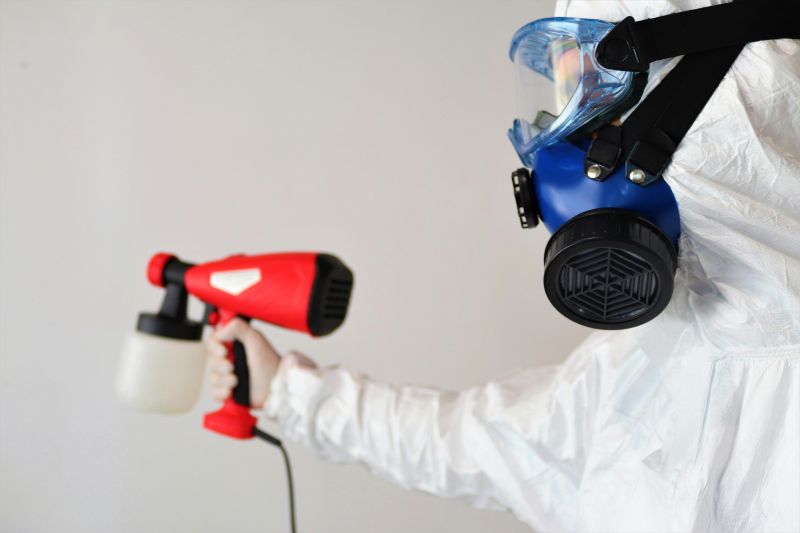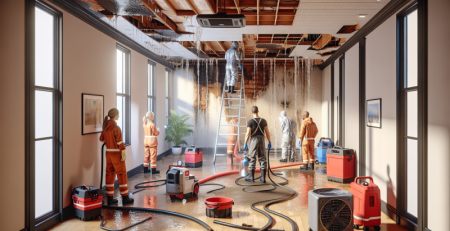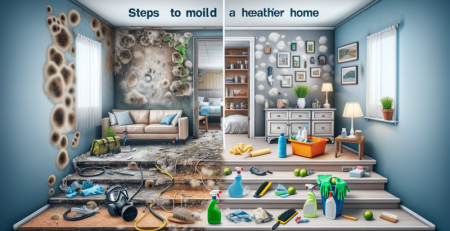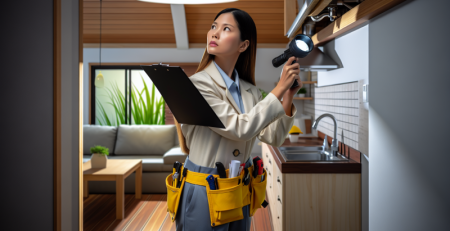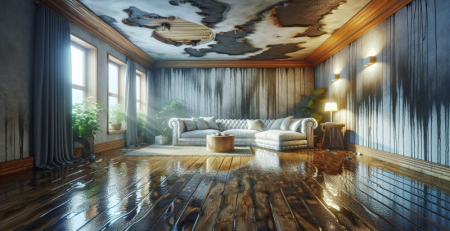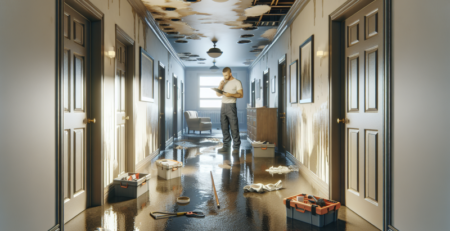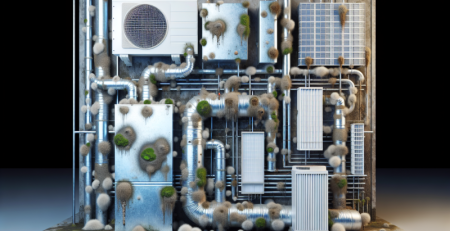The Best Ways to Prevent Mold in Your Home
Mold can be a persistent problem in many homes, posing risks to both health and property. Understanding the best ways to prevent mold growth is essential for maintaining a safe and healthy living environment. In this blog, we will explore effective strategies to keep your home mold-free, including proper ventilation, moisture control, and regular maintenance. At Kraus Restoration, NJ’s leaders in water, mold, and fire damage restoration, we emphasize the importance of proactive measures to combat mold. With our IICRC certified experts and 24/7 emergency services, we are dedicated to helping homeowners in Central and Northern NJ protect their properties. Whether you’re dealing with a recent water leak or simply want to safeguard your home, our tips will guide you in preventing mold before it becomes a problem. For immediate assistance, don’t hesitate to call us at (973) 886-2021.
Understanding Mold: Causes and Risks
Mold is a common household issue that can pose significant health risks and damage to your property. Understanding the causes of mold growth is crucial for effective prevention. Mold thrives in damp, humid environments, making areas with poor ventilation, leaks, or high moisture levels prime candidates for infestation. Common sources of moisture include:
- Leaky roofs or plumbing
- Condensation on windows and walls
- High humidity levels, especially in bathrooms and kitchens
The risks associated with mold exposure are serious. According to the Centers for Disease Control and Prevention (CDC), mold can trigger allergic reactions, asthma attacks, and other respiratory issues. "Mold can produce allergens and irritants that may cause health problems," warns the CDC.
To mitigate these risks, it’s essential to maintain a dry environment in your home. Regularly inspect areas prone to moisture, such as basements and attics, and address any leaks immediately. Utilizing dehumidifiers and ensuring proper ventilation can also help keep mold at bay.
For more information on effective mold prevention strategies, visit our mold cleanup services page. If you suspect mold growth in your home, don’t hesitate to contact us for professional assistance. For additional insights on maintaining a healthy home environment, check out our water cleanup services.
Keeping Humidity Levels in Check
Maintaining optimal humidity levels in your home is crucial for preventing mold growth. Mold thrives in damp environments, making it essential to keep indoor humidity between 30% and 50%. To achieve this, consider using dehumidifiers in areas prone to moisture, such as basements and bathrooms. Regularly checking and repairing leaks in plumbing or roofing can also significantly reduce excess moisture.
Additionally, proper ventilation is key. Ensure that your home has adequate airflow by using exhaust fans in kitchens and bathrooms, and by opening windows when weather permits. This helps to circulate air and reduce humidity levels. If you live in a particularly humid climate, investing in a whole-home dehumidification system may be beneficial.
It’s also important to monitor humidity levels with a hygrometer, which can provide real-time data on indoor moisture. If you notice persistent high humidity, take immediate action to address the issue. For more comprehensive solutions, consider consulting professionals who specialize in mold cleanup and water damage restoration. By taking proactive measures to control humidity, you can create a healthier living environment and significantly reduce the risk of mold infestations in your home. For further assistance, feel free to contact our team.
Effective Ventilation Strategies
Proper ventilation is crucial in maintaining a healthy indoor environment and preventing mold growth in your home. Effective ventilation strategies help regulate humidity levels, ensuring that moisture does not accumulate in areas prone to dampness, such as bathrooms, kitchens, and basements. One of the simplest methods is to open windows and doors whenever possible to allow fresh air to circulate. Additionally, using exhaust fans in high-moisture areas can significantly reduce humidity levels. These fans should be vented outside to ensure that moist air is expelled rather than recirculated.
Another effective approach is to utilize dehumidifiers, especially in areas with high humidity. Dehumidifiers work by extracting excess moisture from the air, creating an environment that is less conducive to mold growth. Regular maintenance of HVAC systems is also essential; ensuring that air filters are clean and that ducts are free of obstructions can improve airflow and reduce moisture buildup.
For more comprehensive solutions, consider professional services that specialize in mold cleanup and water damage restoration. These experts can assess your home’s ventilation needs and implement strategies tailored to your specific situation, ensuring a mold-free environment. Don’t hesitate to contact professionals for advice on maintaining effective ventilation in your home.
Regular Cleaning and Maintenance Tips
To effectively prevent mold growth in your home, regular cleaning and maintenance are essential. Mold thrives in damp, dark environments, so keeping your living spaces dry and well-ventilated is crucial. Start by routinely inspecting areas prone to moisture, such as bathrooms, kitchens, and basements. Ensure that any leaks from pipes or roofs are promptly repaired to eliminate sources of water accumulation.
In addition to addressing leaks, it’s important to clean surfaces regularly. Use a mixture of water and vinegar or a mild detergent to wipe down surfaces, especially in areas that may harbor mold spores. Pay special attention to corners, behind appliances, and under sinks. Regularly changing air filters in your HVAC system can also improve air quality and reduce humidity levels, making it less conducive for mold to grow.
Moreover, consider using a dehumidifier in particularly humid areas of your home. This device can help maintain optimal humidity levels, ideally between 30-50%. For more extensive mold issues, it may be necessary to consult professionals who specialize in mold cleanup and restoration. Staying proactive with these cleaning and maintenance tips will significantly reduce the likelihood of mold infestations, ensuring a healthier living environment for you and your family. For more information on our services, visit our services page or contact us for assistance.
Identifying and Repairing Water Leaks
Water leaks are a significant contributor to mold growth in homes, making it essential to identify and repair them promptly. The first step in preventing mold is to regularly inspect areas prone to leaks, such as under sinks, around toilets, and near appliances like dishwashers and washing machines. Look for signs of moisture, such as water stains, discoloration, or peeling paint. Additionally, check your roof and gutters for any potential leaks that could lead to water intrusion.
Once a leak is detected, immediate action is crucial. Repairing the source of the leak may involve tightening connections, replacing damaged pipes, or sealing cracks. If the leak has caused water damage, it’s important to dry the affected area thoroughly to prevent mold spores from taking hold. Utilizing professional services can ensure that the repair is done correctly and that any residual moisture is eliminated. For comprehensive assistance, consider reaching out to experts in water cleanup and mold cleanup.
Regular maintenance and vigilance can significantly reduce the risk of water leaks and subsequent mold growth. By taking proactive measures, homeowners can create a healthier living environment and protect their property from the damaging effects of mold. For more information on how to safeguard your home, visit our about page.
Choosing Mold-Resistant Materials
When it comes to preventing mold growth in your home, selecting mold-resistant materials is a crucial step. Mold thrives in damp environments, so using materials that resist moisture can significantly reduce the risk of mold infestations. For instance, consider using mold-resistant drywall, which is specially designed to withstand humidity and moisture. This type of drywall is treated with a water-resistant core and a special paper that helps prevent mold growth.
Additionally, opt for mold-resistant paints that contain antimicrobial agents. These paints not only provide a protective barrier but also inhibit the growth of mold and mildew on surfaces. In areas prone to moisture, such as bathrooms and kitchens, using mold-resistant caulk can also be beneficial. This caulk is formulated to resist mold and mildew, ensuring that seams and joints remain protected.
Furthermore, when selecting flooring, consider materials like vinyl or tile, which are less susceptible to mold compared to carpets. By incorporating these mold-resistant materials into your home, you can create a healthier living environment. For more information on effective mold prevention strategies, visit our mold cleanup services or explore our residential design projects for inspiration. If you have any questions, feel free to contact us for expert advice.
The Role of Indoor Plants in Mold Prevention
Indoor plants can play a significant role in preventing mold growth in your home. They not only enhance the aesthetic appeal of your living space but also contribute to a healthier indoor environment. One of the primary ways indoor plants help combat mold is through their natural ability to absorb excess moisture from the air. By maintaining optimal humidity levels, plants can create an environment that is less conducive to mold proliferation.
Certain plants, such as peace lilies and spider plants, are particularly effective at reducing humidity and filtering out airborne toxins. This not only helps in mold prevention but also improves overall air quality. Additionally, the presence of indoor plants can promote better ventilation and airflow, further reducing the likelihood of mold growth in damp areas.
Incorporating indoor plants into your home is a simple yet effective strategy for mold prevention. However, it’s essential to choose the right plants and ensure they are well-maintained. Regularly check for overwatering, as this can lead to mold growth in the soil itself. For more comprehensive strategies on keeping your home mold-free, consider exploring our mold cleanup services or learn about our water cleanup solutions. If you have any questions, feel free to contact us for assistance.
In conclusion, preventing mold in your home is essential for maintaining a healthy living environment and protecting your property. By implementing the strategies discussed—such as controlling humidity levels, ensuring proper ventilation, promptly addressing leaks, and regularly cleaning and inspecting your home—you can significantly reduce the risk of mold growth. Remember that vigilance is key; regular maintenance and awareness of potential problem areas will go a long way in keeping mold at bay. By taking proactive steps, you not only safeguard your home but also promote the well-being of everyone who lives there. Stay informed, stay proactive, and enjoy a mold-free home!
